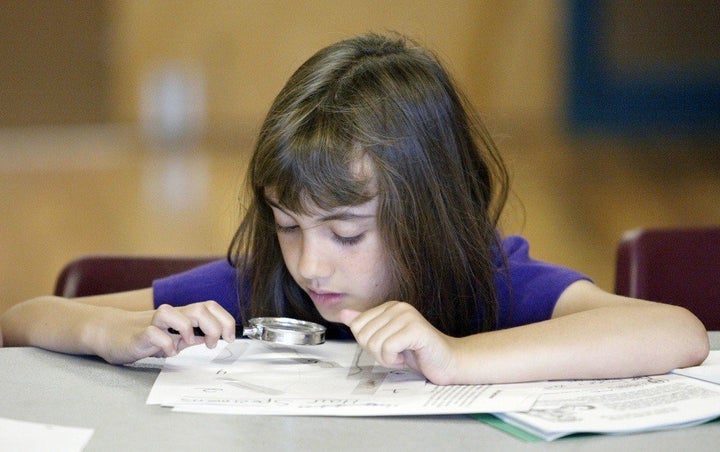
U.S. education is suffering from a crisis in confidence. Education Secretary Arne Duncan has estimated that 80 percent of public schools could be failing under the No Child Left Behind Act. States are calling for reform while coming to blows with teachers unions. In Chicago, politics and deficit worries are threatening to mire the school system. Failure is not an option.
But what if it was? What if we let children get things wrong once in a while? As an inventor, I make mistakes. It's how we learn what works and find new ways of doing things.
I've seen this approach get the best out of children in U.K. classrooms. And I think it can work in the U.S.
Chicago Mayor-Elect Rahm Emanuel has made education his first priority. He pledges to extend the school day, improve math and reading skills, and raise college graduation rates. Essential aims. But I think a fundamental point needs to be addressed: can more be done to inspire students?
It's easy to get lost in statistics and scores. But education shouldn't be about box ticking, whether that's how children are taught or how their success is measured. Education should be inspiring. It should provide real life skills. It should show children they can make a difference to their community and society. With global competitiveness making better technology essential, subjects like engineering and science are vital.
However, there's a growing gap between education and occupation. Science and engineering jobs are growing 70 percent faster than in other fields, but not enough Americans will be qualified to fill them. Do kids care? No, not yet. We shouldn't expect them to put national discourse above playground politics. But we should at least provide enough exposure to these subjects so they can consider them as career options.
Students should have that choice -- too often they don't. Chicago, for example, has one of the shortest school days in the country, which means there often isn't enough time for science and technology lessons. At the moment, less than one percent of Chicago students rate as "advanced" on scientific proficiency. Many students under perform and are left disinterested.
This trend can be turned around. Students have never been so technologically savvy, nor as environmentally aware. Children should be shown that engineers and scientists are behind their smartphones, the people responsible for developing their parents' hybrid cars and clean energy sources. To do this, learning needs to be connected with real life.
Children can see how creative and rewarding it can be to solve problems through practical testing. Textbooks and digital learning tools are important, but they don't give children the hands-on experience needed to engage and inspire. Students want things that tap into their interests and capture their imagination.
One solution is Design and Technology -- a course developed for the U.K. school curriculum. It blends creativity with engineering theory. It develops practical skills, as well as an understanding of design aesthetics, environmental issues and industry. It prepares students for a rapidly changing technological world -- sowing the seeds for future inventors and their ideas.
Its application to real technology and situations makes it unique to the U.K. education system. My Foundation would like to introduce it to the U.S. -- starting with Chicago, Dyson's U.S. home.
In September, we'll be launching engineering activities for the classroom, resources for teachers and after school engineering clubs in Chicago.
The foundation encourages kids to fail. Or rather, not be afraid to fail: to experiment, test ideas and make something new. Students need an alternative to read-and-repeat. They need to use their heads and hands to identify problems and go about solving them. Taking things apart and developing new ways to do things. Not to be mistaken for playtime, it's how children develop critical thinking skills and the practical knowledge for how things work. And it's fun.
Change won't come over night. But along with the work of organizations such as FIRST Robotics, and a commitment from the education community, we hope to help inspire more children to become the inventors of the future. Engineering is exciting, rewarding and creative. Let's help children find that out for themselves.